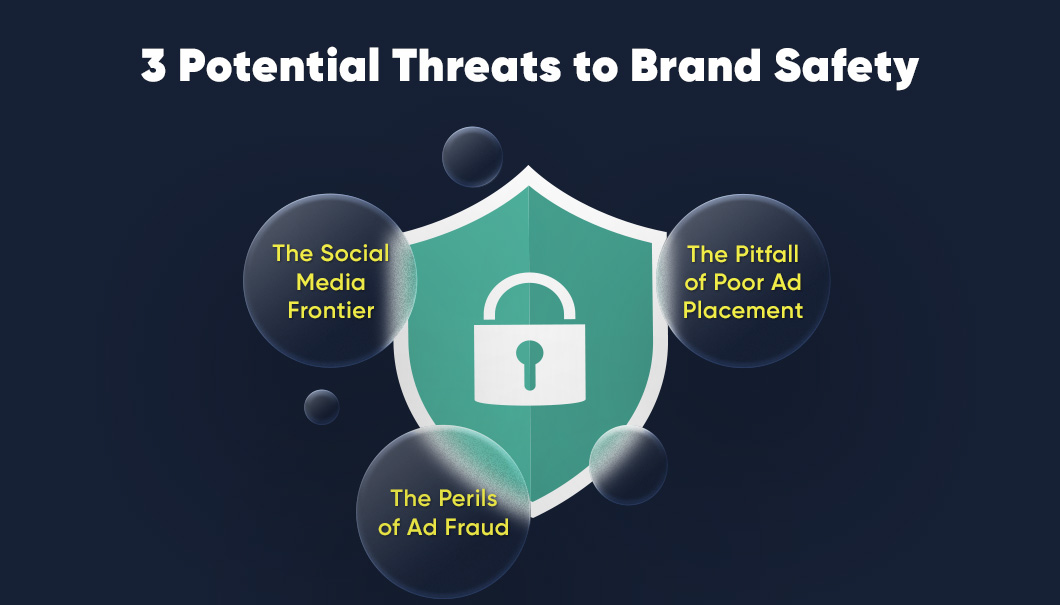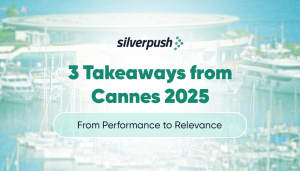Safe and Sound: Building a Fortified Online Presence for Your Brand | 26 Dec, 2023

In the digital age, where a brand’s reputation is built and broken online, brand safety has emerged as a critical business imperative. It goes beyond simply avoiding harmful content; it’s about strategically managing your brand’s online presence and ensuring it appears in environments that are aligned with your values, resonate with your target audience, and ultimately contribute to your overall business goals.
What is Brand Safety?
In essence, brand safety encompasses a set of measures, guidelines, and practices to ensure that a brand’s advertising does not appear in contexts that could potentially harm its image. This is especially crucial in the world of digital advertising, where programmatic placements might lead to ads appearing alongside off-brand, offensive, or controversial content.
Brand safety is a paramount concern for advertisers today, focusing on safeguarding the reputation of their brands and preventing them from associating with negative environments. The Global Alliance for Responsible Media (GARM) has developed the GARM: Brand Safety Floor + Suitability Framework to aid brands in maintaining their reputation by avoiding harmful or inappropriate content.
Critical components of brand safety include:
- Contextual Relevance: Guaranteeing that ad content is not only appropriate but also relevant to the content of the webpage, video, or other media in which it is displayed.
- Quality of Placement: Ensuring that ads are featured on websites or media outlets that align with the brand’s values and quality standards.
- Content Exclusions: Employing negative keyword lists, blocklists, or other filtering tools to prevent ads from being displayed next to specific types of content.
- Compliance and Regulation: Ensuring that ad placements adhere to industry regulations, which may vary by country, encompassing guidelines on advertising for products like tobacco, alcohol, or pharmaceuticals.
- Audience Targeting: Confirming that ads are directed at a demographic that is not only suitable but also intended for the advertised product or service.
Why Does it Matter?
Imagine your brand’s carefully crafted ad appearing next to a controversial news article or an offensive video. The resulting damage to your brand image could be significant, leading to lost sales, customer churn, and a negative public perception.
A 2021 US survey revealed that 80% of respondents expressed concern about brands appearing alongside negative content online. This statistic underscores the importance of brand safety for businesses of all sizes, regardless of industry or target audience.

Several factors pose significant risks to brand safety in the ever-evolving digital landscape:
1. The Social Media Frontier: Over time, social media has become a globally acknowledged source of truth. A well-crafted social media presence plays a crucial role in establishing a brand’s identity. Individuals prefer staying informed and closely monitoring their favored brands on social platforms. However, the dual nature of social media poses both advantages and challenges.
While it serves as an excellent avenue for brand promotion and interaction with customers and enthusiasts, it also carries the risk of brand reputation damage if ads appear alongside objectionable content. This powerful tool’s accessibility has led to instances where internet users have criticized brands for inappropriate content, imagery, or placement next to questionable material or pages.
To ensure brand safety, meticulous attention is required in areas such as ad strategy, and monitoring mentions, comments, and appearances. Marketers must remain vigilant against impostors and identity thieves capable of causing significant harm through fraudulent activities or posting unsavory content.
2. The Perils of Ad Fraud: In an industry valued at over US$ 640 billion, fraudulent activities are inevitable. Dubious websites, often assisted by bots, generate false clicks and attract ads, leading to significant financial losses for advertisers every month. It is imperative for marketers to ascertain whether their ads genuinely reach the intended audience, exercise control over ad impressions, and measure the quality of impressions and clicks.
The impact on brand safety is notable, with adult websites being a major contributor to ad fraud. An esteemed brand’s ad appearing alongside adult content can severely damage its image. While keyword block lists are useful, they alone cannot guarantee brand safety, and the practice may have unintended consequences.
3. The Pitfall of Poor Ad Placement: Ad placements are not just about reaching a large audience; they are about ensuring your brand appears in the right context. Placing ads on websites that are inconsistent with your brand values or target audience can lead to negative associations and erode your brand image.
A common mistake among marketers and advertisers is the oversight of ad placement strategy. Reports have criticized YouTube for displaying ads from renowned brands alongside misinformation and conspiratorial content. Emphasizing the importance of ad placements is crucial, as they significantly impact a brand’s image.
Striking the Perfect Balance of Brand Safety with Contextual
Contextual targeting offers a powerful solution to the challenges of brand safety. This innovative technology utilizes artificial intelligence, including Natural Language Processing (NLP) and Sentiment Analysis, to understand the context of web pages and online environments. By analyzing the written and visual content, contextual targeting enables brands to place their ads on relevant websites with content that aligns with their brand values and resonates with their target audience.
Mirrors by Silverpush: Your Trusted Partner in Brand Safety

Mirrors by Silverpush is a cutting-edge contextual targeting platform designed to help brands achieve their goals while maintaining the highest levels of brand safety. Utilizing sophisticated AI algorithms and advanced language models, Mirrors analyzes the written and visual content of web pages, ensuring that your ads appear in safe and brand-aligned environments. With Mirrors, you can:
- Protect your brand reputation through intelligent ad placement.
- Reach your target audience with precision and relevance.
- Gain valuable insights into your audience’s behavior and preferences.
- Optimize your campaigns for maximum effectiveness and return on investment.
In conclusion, brand safety is no longer a luxury; it’s a necessity for businesses operating in the digital world. Innovative solutions like contextual targeting and partnering with trusted solutions like Mirrors, brands can ensure their reputation is safeguarded, their advertising efforts are effective, and their overall business objectives are achieved.

BLOGS
3 Takeaways from Cannes 2025: From Performance to Relevance
Last month, Silverpush team kicked off the #SummerOfContext in a big way at the Cannes Lions International Festival of Creativity 2025. To start off the week, we launched a brand new contextual targeting solution for TikTok to help brands with brand safety and higher relevance. We also announced our ...

BLOGS
Partner Spotlight: Ben Salaman, Senior Strategist at PB&
1. Tell us about your agency. What makes you stand out? PB& is a small, independent agency that was founded by people who have spent a lot of their careers in larger agencies. We saw that creativity and efficiency often tend to suffer due to silos, so our founder decided to ...

BLOGS
How to Win at TikTok Advertising in 2025 With Contextual Targeting
TikTok is no longer just a platform for viral dances and trending audio, it’s now a serious force in the advertising world. With nearly 2 billion users and over 1.8 billion reachable through ads, it’s where your audience is spending their time. But while TikTok delivers unmatched reach, it hasn’t ...







